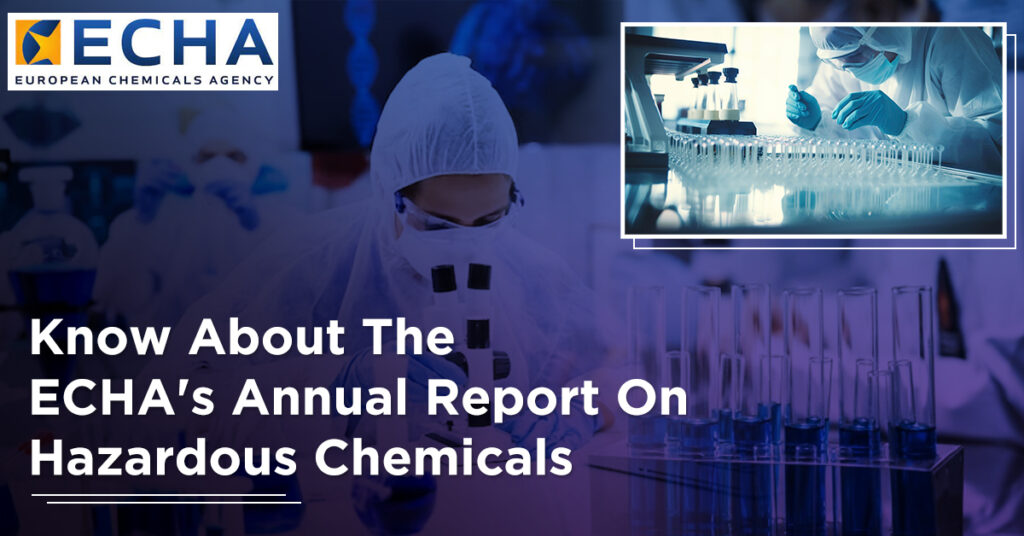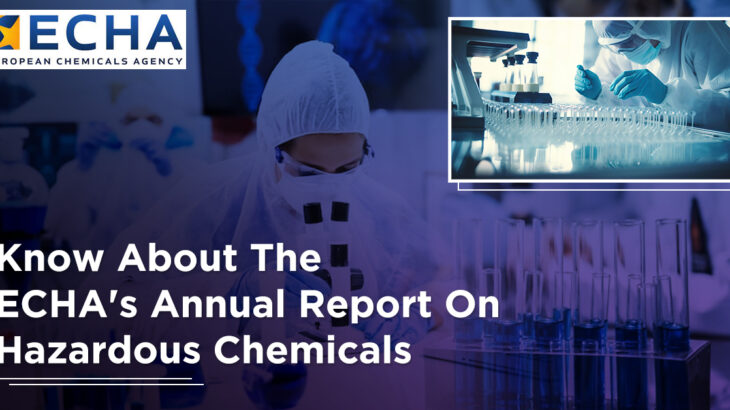
ECHA, or European Chemical Agency, plays a crucial role in safeguarding and using the chemicals responsibility with the EU or European Nation. One of the primary initiatives taken by the ECHA is developing the annual report on the Trade of Chemicals. It is an extensive document that sheds light on the distinct aspects of chemical usage, regulations, and the entire strictly banned chemical substance in the EU.
Background On Trade Of Chemicals:
Around 2022, a comprehensive report regarding the export and import of chemicals was formulated under Prior Informed Consent (PIC). It was submitted to ECHA under the guidance of the European Union with consent from 24 countries and 543 corporations that are members and entities within the EU.
Three EU member nations and Northern Ireland refrained from submitting any data as they were not engaged in exporting PIC chemicals. Conversely, in conjunction with 21 EU member nations and 191 companies, Northern Ireland furnished data about the internal importation of these chemicals within the EU. Notably, six EU countries declared they abstained from importing chemicals subject to Prior Informed Consent (PIC).
Annual Report On Trade Of Chemicals:
The commerce of goods containing benzene within the European Union has notably risen, as indicated by the annual report released by the European Chemicals Agency (ECHA). The primary cause behind this slight trend is the incorporation of benzene into the list of chemicals subject to Prior Informed Consent (PIC) in 2022. The benzene is added as one of the major constituents in PIC from 2022. The annual report on the Trade Of Chemicals marks the import of the severely banned chemicals in PIC, which increased 20 times from 883 119,74 tonnes to 19 698 668,33 tonnes within 2021-2022. From 2021 to 2022, there was also a 24% surge in the outbound shipment of prohibited or severely restricted chemicals from the EU to nations outside the EU. In essence, there has been an escalation in both the import and export of detrimental chemicals under the PIC Regulation during 2022.
The European Chemicals Agency (ECHA) consistently releases yearly summaries regarding the commerce of prohibited or heavily limited substances within the European Union. With this annexation, compounds encompassing benzene marked the foremost “substance in substance” inclusion under the PIC Regulation, representing 96% of the documented imports in 2022. The report further notes a 24% upswing in the outbound shipment of prohibited or significantly restricted chemicals from the EU over the identical timeframe, totaling 980,941.51 tons of PIC chemicals exported during the 2021-2022 span.
It is essential to highlight that by Section 10 of the PIC Regulation, individuals engaged in importing and exporting must furnish details concerning the yearly commerce involving substances enumerated in Annex I of the Regulation. Subsequently, they are required to convey this information to the pertinent national authorities by the end of March in the subsequent year. Additionally, ECHA urges every European Union member state to submit consolidated data.
ECHA’s annual report on hazardous chemicals is a comprehensive resource for policymakers, industry stakeholders, and the general public. By offering a detailed analysis of regulatory developments, compliance data, and the overall landscape of hazardous substances, the report contributes to the ongoing efforts to create a safer and more sustainable environment within the European Union. Sunstream underscores the importance of initiatives and informed decision-making of various regulations such as REACH, ROHS, PFAS, and conflict mineral compliance ensuring the responsible management of the business for the present and future generations.




 +1.585.935.7123
+1.585.935.7123 +91-804-148-6861
+91-804-148-6861